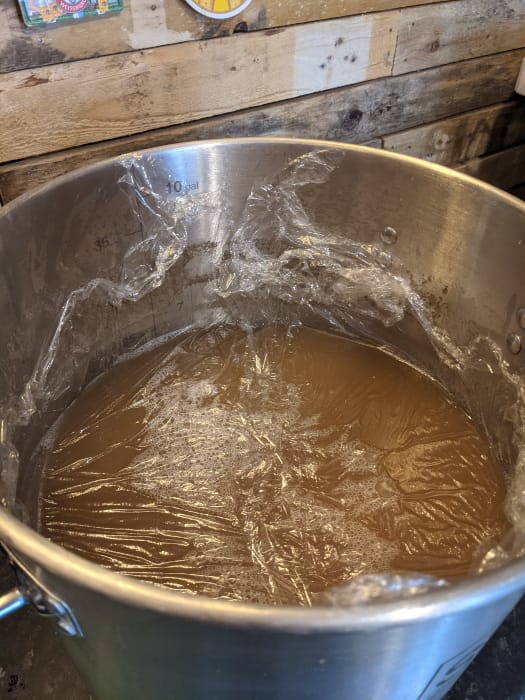There are a few ways to make a sour beer. You can leave it down to nature (and a whole lot of luck) and ferment in the open.
You can age your beer in secondary fermentation (or a barrel) inoculated with various sour producing bacteria like ‘lactobacillus’ or ‘pediococcus’. You can use some fruits that would contribute some tart flavour via citric acid. ‘Brettanomyces’ is also something that can be used to add some level of acidic souring.
All of these are proven and have been used for many years to produce some of the world best soured beers like Lambic, Guezue and Flanders red ales.
Another method and the one I am going to explain in this article is a process called kettle souring, unlike souring during fermentation you perform the souring after mashing in the kettle. Then stop the souring process by boiling and finish the beer as normal with a typical ‘Saccharomyces’ yeast strain.
Benefits
There are two main benefits to using this process.
Control
You are in control of how sour you what the beer to be. Using the more traditional techniques you are at the mercy of nature and what the bugs will do. Hence why most Belgian Lambic brewers blend their beers.
Cold Side Contamination
Once you get these sour producing bugs into anything post-boil, they are there to stay. Any beer produced using this same equipment is liable to sour over time. This is not limited to the fermentation vessel, but, any spoons, syphons, tubing, basically anything that is in contact with the wort can become contaminated.
What do you need?
You will need two things, some wort (of course) and some method of introducing lactobacillus Bacteria. You can purchase vials from most homebrew suppliers. Some probiotic yogurts contain lactobacillus, I’ve even heard of people using a hand full of uncrushed grains as they are covered in bacteria. My preference is to use a vial from a supplier just so I know what I am getting and what is going into my wort.
You will also need a bit of patience; this is not an instant process. It is by no means a twelve-month barrel ageing process but your brew ‘day’ will span multiple days.
Beer Styles
This technique is best used for styles that require a clean sour profile, now days used to produce Berliner Weiss and Gose (more likely in the US rather than Germany!) but I am sure can also be employed to introduce some sourness to most beer styles, soured London Porter anyone?
Just a note, will not be producing any award winning Lambic with this technique, although used in combination with a more traditional mixed culture fermentation it could be used to give this beer a more tart kick!
Process
This is the process I use to make a Gose. It’s a three stage process spread over a couple of days.
** You may need to adjust stage 2 based on what you are brewing but the basic principle is the same.
Stage 1
Start with a standard brew day:
- Mash your grains
- Sparge and collect your wort in the kettle
This is where the process starts to differ.
When you have collected your volume of wort:
- Boil the wort for 15 mins to pasteurize, we are not adding any hops at this stage
- Cool the wort to 35c.
- Use Lactic Acid to reduce the PH between 4.5 to 5.0.
- Add you source of lactobacillus.
- Cover the wort with some cling-film, use a few layers as we want to limit oxygen at this stage (see picture)
- Put the kettle somewhere you can maintain a temperature of around 35c.

Stage 2
After 24 hours take another pH reading, you are looking for a pH of around 3.2 pH for a good, assertive tart sourness. If you don’t want it too sour, aim for a higher pH ~3.7 pH.
Once you reach your desired pH (this could take 36 hours or longer) you’re then ready to move on to the next stage:
- Bring the wort up to a boil. I boil for 15 mins only; hops and other flavourings are also added.
- Cool wort to pitching temperature (18c-20c)
- Transfer to fermentation vessel
- Pitch your ale yeast of choice.
Stage 3
Ferment as normal, package, serve and enjoy.
